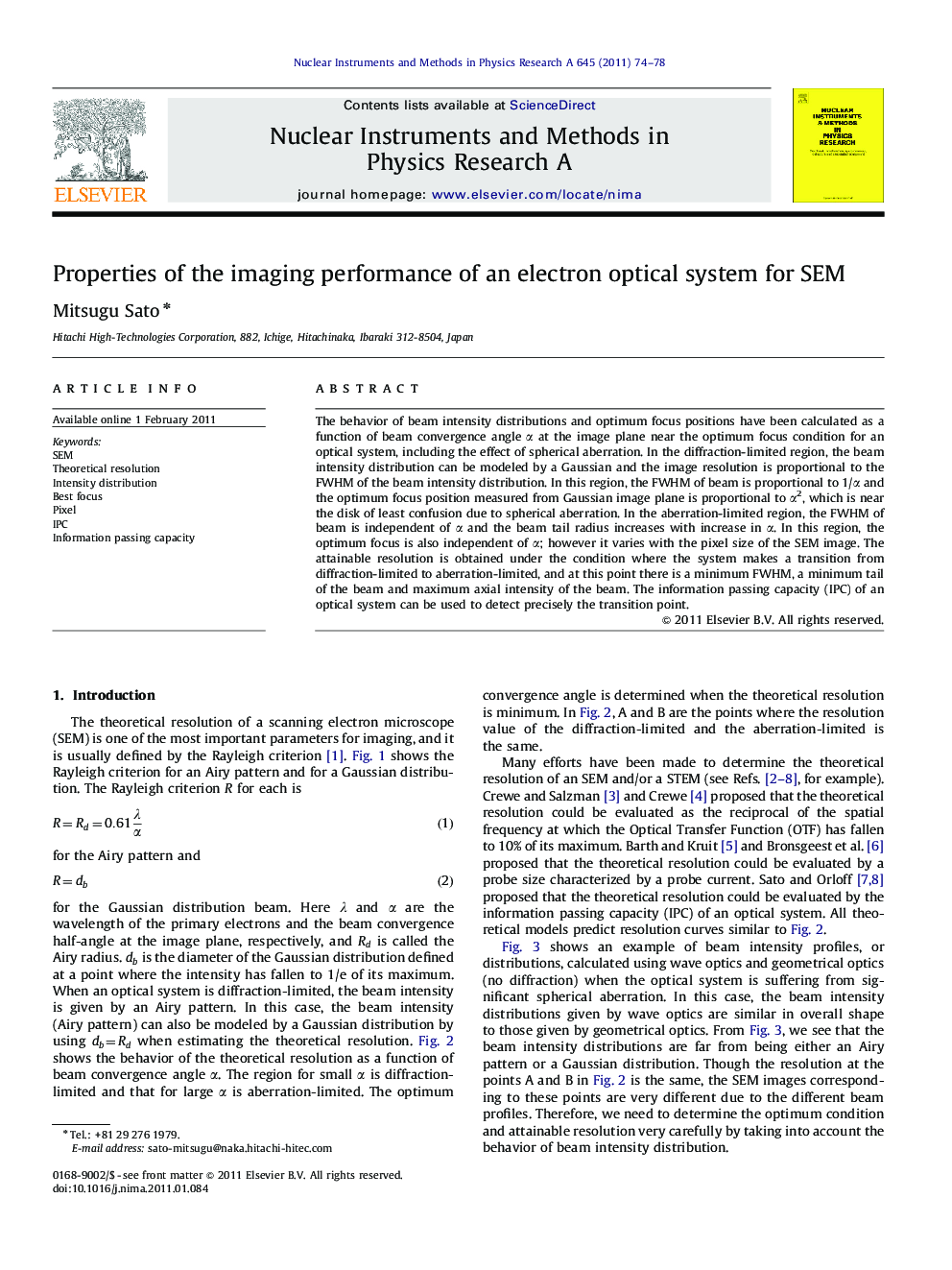| Article ID | Journal | Published Year | Pages | File Type |
|---|---|---|---|---|
| 1824974 | Nuclear Instruments and Methods in Physics Research Section A: Accelerators, Spectrometers, Detectors and Associated Equipment | 2011 | 5 Pages |
The behavior of beam intensity distributions and optimum focus positions have been calculated as a function of beam convergence angle α at the image plane near the optimum focus condition for an optical system, including the effect of spherical aberration. In the diffraction-limited region, the beam intensity distribution can be modeled by a Gaussian and the image resolution is proportional to the FWHM of the beam intensity distribution. In this region, the FWHM of beam is proportional to 1/α and the optimum focus position measured from Gaussian image plane is proportional to α2, which is near the disk of least confusion due to spherical aberration. In the aberration-limited region, the FWHM of beam is independent of α and the beam tail radius increases with increase in α. In this region, the optimum focus is also independent of α; however it varies with the pixel size of the SEM image. The attainable resolution is obtained under the condition where the system makes a transition from diffraction-limited to aberration-limited, and at this point there is a minimum FWHM, a minimum tail of the beam and maximum axial intensity of the beam. The information passing capacity (IPC) of an optical system can be used to detect precisely the transition point.
